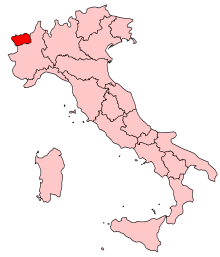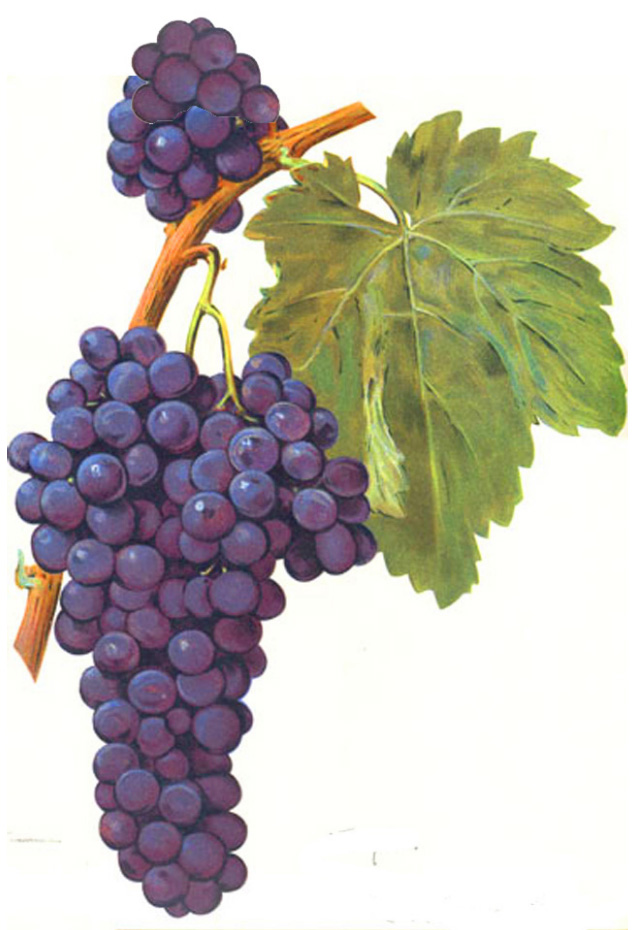|
Neyret
Neyret is a red Italian wine grape variety that is grown in the mountainous Valle d'Aosta wine region of northwest Italy though most plantings are in the slightly less mountainous terrain of southeast Aosta Valley bordering the Piedmont wine region.J. Robinson ''Jancis Robinson's Guide to Wine Grapes'' pg 128 Oxford University Press 1996 DNA profiling has confirmed that the variety is a ''Vitis vinifera'' crossing of Mayolet and Roussin.Vitis International Variety Catalogue (VIVC) Neyret' Accessed: October 9th, 2012 DOC wines Within the all encompassing ''Denominazione di origine controllata'' (DOC) of the Valle d'Aosta region Neyret is a permitted variety in the standard red wine as well several specialized wine within the DOC. For the general Rosso and rosé wine, Neyret grapes must be harvested at a yield no greater than 12 tonnes/hectare with the finished wine attaining a minimum alcohol level of at least 9.5% and be aged at least six months prior to release.P. Saund ... [...More Info...] [...Related Items...] OR: [Wikipedia] [Google] [Baidu] |
Valle D'Aosta Wine
The Valle d'Aosta DOC (or Vallée d'Aoste DOC, in French) is an Italian ''denominazione di origine controllata'' located in the Aosta Valley of northwest Italy. Surrounded by the Alps, the Valle d'Aosta is home to the highest elevated vineyards in all of Europe. The principal winemaking region of the Valle d'Aosta is found along the eastern banks of the Dora Baltea ( fr., ''Doire baltée'') river with the city of Aosta serving as the central winemaking location. The region is divided into three main vineyard areas; the upper valley, Valdigne, the central valley (locally ''Valle centrale'' in Italian, ''Vallée centrale'' in French) and the lower valley, (locally ''Bassa valle'' in Italian, ''Basse vallée'' in French). To the south is the winemaking region of Piedmont. The Valle d'Aosta is Italy's smallest winemaking region both in terms of size and production with only about 330,000 cases produced annually in the region and only 36,000 cases produced under the DOC label. Seventy ... [...More Info...] [...Related Items...] OR: [Wikipedia] [Google] [Baidu] |
Grape Variety
This list of grape varieties includes cultivated grapes, whether used for wine, or eating as a table grape, fresh or dried (raisin, currant, sultana). For a complete list of all grape species including those unimportant to agriculture, see Vitis. The term ''grape variety'' refers to cultivars rather than actual botanical varieties according to the International Code of Nomenclature for Cultivated Plants, because they are propagated by cuttings and may have unstable reproductive properties. However, the term ''variety'' has become so entrenched in viticulture that any change to using the term ''cultivar'' instead is unlikely. Single species grapes While some of the grapes in this list are hybrids, they are hybridized within a single species. For those grapes hybridized across species, known as interspecific hybrids, see the section on multispecies hybrid grapes below. ''Vitis vinifera'' (wine) Red grapes White grapes Rose Grapes ''Vitis vinifera'' (table) ... [...More Info...] [...Related Items...] OR: [Wikipedia] [Google] [Baidu] |
Petit Rouge
Petit Rouge is a red Italian wine grape variety that ampelographers believe is indigenous to the Valle d'Aosta (french: Vallée d'Aoste) region of northwest Italy.J. Robinson ''Jancis Robinson's Guide to Wine Grapes'' pg 136 Oxford University Press 1996 However, there is some confusion about whether Petit Rouge is the same variety as the red Swiss wine grape Rouge de Valais. J. Robinson ''Vines, Grapes & Wines'' pg 210 Mitchell Beazley 1986 The grape is somewhat obscure and is not widely grown outside the Valle d'Aosta where it is primarily a blending variety but some varietal wines are produced. Oz Clarke & M. Rand ''Encyclopedia of Grapes'' pg 167 Webster International Publishers In blends, it adds floral aroma notes and dark color to the wines. Wine regions Petit Rouge is primarily found in the Valle d'Aosta region of northwest Italy between Piedmont and the Alps separating Italy from France and Switzerland. In general, altitude determines which varieties of grapes may ... [...More Info...] [...Related Items...] OR: [Wikipedia] [Google] [Baidu] |
Arvier
Arvier ( Valdôtain: ' or '; frp, Arviér); is a town and ''comune'' in the Aosta Valley region of northwestern Italy. Geography Wine The local wine, Enfer d'Arvier, had its own DOC designation before being subsumed into the Valle d'Aosta DOC. It is a blend made primarily from the Petit Rouge grape with lesser amounts of Dolcetto, Gamay, Neyret, Pinot noir, and/or Vien de Nus.T. Stevenson ''"The Sotheby's Wine Encyclopedia"'' p. 274 Dorling Kindersley 2005 People Arvier was the birthplace of Maurice Garin, the winner of the original Tour de France The Tour de France () is an annual men's multiple-stage bicycle race primarily held in France, while also occasionally passing through nearby countries. Like the other Grand Tours (the Giro d'Italia and the Vuelta a España), it consists ... in 1903. His family migrated to Northern France in 1885. Notes and references Cities and towns in Aosta Valley {{Aosta-geo-stub ... [...More Info...] [...Related Items...] OR: [Wikipedia] [Google] [Baidu] |
Italian Wine
Italian wine is produced in every region of Italy. Italy is the world's largest producer of wine, with an area of under vineyard cultivation, and contributing a 2013–2017 annual average of 48.3 million hl of wine. In 2018 Italy accounted for 19 per cent of global production, ahead of France (17 per cent) and Spain (15 per cent). Italian wine is both exported around the world and popular domestically among Italians, who consume an average of 42 litres per capita, ranking fifth in world wine consumption. The origins of vine-growing and winemaking in Italy has been illuminated by recent research, stretching back even before the Phoenician, Etruscans and Greek settlers, who produced wine in Italy before the Romans planted their own vineyards. The Romans greatly increased Italy's viticultural area using efficient viticultural and winemaking methods. History Vines have been cultivated from the wild ''Vitis vinifera'' grape for millennia in Italy. It was previously believed that ... [...More Info...] [...Related Items...] OR: [Wikipedia] [Google] [Baidu] |
Fumin (grape)
Fumin is a red Italian wine grape variety that is grown primarily in the Valle d'Aosta region of northwest Italy. According to wine expert Jancis Robinson, the grape is "tough" and used primarily as a blending grape in the ''Denominazione di origine controllata The following four classifications of wine constitute the Italian system of labelling and legally protecting Italian wine: * ''Denominazione di origine'' (DO, rarely used; ; English: “designation of origin”), * ''Indicazione geografica tipic ...s'' (DOCs) of the region.J. Robinson ''Jancis Robinson's Guide to Wine Grapes'' pg 72 Oxford University Press 1996 The grape is one of the parent varieties of the Aosta wine grape Vuillermin.J. Robinson, J. Harding and J. Vouillamoz ''Wine Grapes - A complete guide to 1,368 vine varieties, including their origins and flavours'' pg 1154 Allen Lane 2012 References Red wine grape varieties {{wine-grape-stub ... [...More Info...] [...Related Items...] OR: [Wikipedia] [Google] [Baidu] |
Gamay
Gamay is a purple-colored grape variety used to make red wines, most notably grown in Beaujolais and in the Loire Valley around Tours. Its full name is Gamay Noir à Jus Blanc. It is a very old cultivar, mentioned as long ago as the 15th century. It has been often cultivated because it makes for abundant production; however, it can produce wines of distinction when planted on acidic soils, which help to soften the grape's naturally high acidity. History The Gamay grape is thought to have appeared first in the village of the Gamay, south of Beaune, in the 1360s. The grape brought relief to the village growers following the decline of the Black Death. In contrast to the Pinot noir variety, Gamay ripened two weeks earlier and was easier to cultivate. It also produced a strong, fruitier wine in a much larger abundance. In July 1395, the Duke of Burgundy Philippe the Bold outlawed the cultivation of the grape, referring to it as the "disloyal Gaamez" that in spite of its ability ... [...More Info...] [...Related Items...] OR: [Wikipedia] [Google] [Baidu] |
Donnas
Donnas ( Valdôtain: or ; Issime wae, Dunaz; pms, Donàs) is a town and ''comune'' in the Aosta Valley region of northwestern Italy Italy ( it, Italia ), officially the Italian Republic, ) or the Republic of Italy, is a country in Southern Europe. It is located in the middle of the Mediterranean Sea, and its territory largely coincides with the homonymous geographical re .... Cities and towns in Aosta Valley {{Aosta-geo-stub ... [...More Info...] [...Related Items...] OR: [Wikipedia] [Google] [Baidu] |
Freisa
Freisa is a red Italian wine grape variety grown in the Piedmont region of north-west Italy, primarily in Monferrato and in the Langhe, but also further north in the provinces of Turin and Biella. Freisa is a vigorous and productive vine whose round, blue-black grapes are harvested in early October. The three-lobed leaves are relatively small and the bunches are elongated in form. By the 1880s it had become one of the major Piedmontese grapes, and in that period its cultivation was stimulated by the vine’s resistance to the downy mildew caused by the Plasmopara viticola fungus. Wines made from the Freisa grape are red and usually somewhat sweet and lightly sparkling, or foaming. Still and fully sparkling versions are also produced, however, as are dry and more decidedly sweet styles. In the Canavese there is also a rosé which can be made primarily from Freisa according to ''Denominazione di origine controllata'' (DOC) regulations. History Plantings of Freisa in the Piedmont reg ... [...More Info...] [...Related Items...] OR: [Wikipedia] [Google] [Baidu] |
Pinot Noir
Pinot Noir () is a red-wine grape variety of the species ''Vitis vinifera''. The name may also refer to wines created predominantly from pinot noir grapes. The name is derived from the French language, French words for ''pine'' and ''black.'' The word ''pine'' alludes to the grape variety having tightly clustered, pinecone–shaped bunches of fruit. Pinot Noir grapes are grown around the world, mostly in cooler climates, and the grape is chiefly associated with the Burgundy (wine), Burgundy region of France (wine), France. Pinot Noir is now used to make red wines around the world, as well as champagne, Sparkling wine, sparkling white wines such as the Italian wine, Italian Franciacorta, and Wine from the United Kingdom, English sparkling wines. Regions that have gained a reputation for red pinot noir wines include the Willamette Valley (wine), Willamette Valley of Oregon (wine), Oregon; the Carneros (AVA), Carneros, Central Coast (AVA), Central Coast, Sonoma Coast AVA, Sonoma ... [...More Info...] [...Related Items...] OR: [Wikipedia] [Google] [Baidu] |
Dolcetto
Dolcetto ( , , ) is a black Italian wine grape variety widely grown in the Piedmont region of northwest Italy. The Italian word ''dolcetto'' means "little sweet one", but it is not certain that the name originally carried any reference to the grape’s sugar levels: it is possible that it derives from the name of the hills where the vine is cultivated. In any case the wines produced are nearly always dry. They can be tannic and fruity with moderate, or decidedly low, levels of acidity and are typically meant to be consumed within a few years after release.O. Clarke ''Encyclopedia of Grapes'' pg 86 Harcourt Books 2001 History One theory suggests the grape originated in France and was brought to Monferrato some time in the 11th century.J. Robinson ''Vines, Grapes & Wines'' pg 209 Mitchell Beazley Publishing 1986 A competing theory has the grape originating in the Piedmontese village of Dogliani.K. MacNeil ''The Wine Bible'' pg 332 Workman Publishing 2001 In 1593, an ordina ... [...More Info...] [...Related Items...] OR: [Wikipedia] [Google] [Baidu] |




